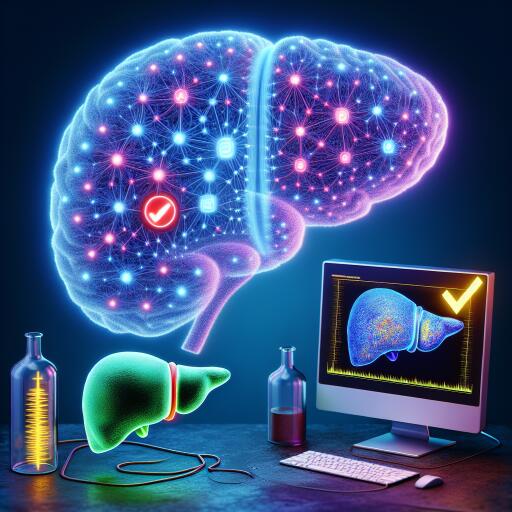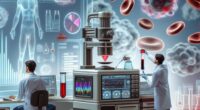A Quantum Leap in Liver Transplant Diagnosis
In a groundbreaking advance, Terra Quantum has unveiled a state-of-the-art image analysis system that surpasses traditional methods in identifying viable livers for transplantation. This innovative approach, which pairs quantum computing with classical machine learning, not only elevates the accuracy of diagnostics but also ensures the privacy of patient data.
Terra Quantum, at the forefront of quantum technology solutions, collaborated with a team of medical and informatics experts to create a diagnostic system that integrates quantum computing techniques with classical machine learning frameworks. Their development, a hybrid quantum neural network (HQNN), harnesses real-world clinical data to discern moderate and severe cases of non-alcoholic fatty liver disease more accurately than existing imaging experts and algorithms.
Non-alcoholic fatty liver disease (NAFLD), a leading cause of liver disease globally, affects approximately 32% of adults. The condition’s extent often plays a crucial role in the success of liver transplants. Published in the peer-reviewed journal Diagnostics, the article “Hybrid Quantum Image Classification and Federated Learning for Hepatic Steatosis Diagnosis” describes this pioneering work. The project involved medical professionals from various esteemed institutions, including the University of Trieste and the Azienda Sanitaria Universitaria Giuliana Isontina, along with Luca Lusnig, a quantum system engineer from Terra Quantum.
At the heart of this computer-aided diagnosis system is an algorithm that provides a detailed heat map of a liver’s condition, aiding physicians in determining the disease’s progression. “This hybrid quantum model, incorporating classical and quantum layers, underscores our strategy of leveraging both classical and quantum software’s strengths,” remarked Markus Pflitsch, founder and CEO of Terra Quantum. Remarkably, the analysis required only five qubits, showcasing the potential of quantum computation in the current noisily intermediate-scale quantum (NISQ) era.
The primary objective was to categorize organs into two groups: livers suitable for transplant and those that are not. Achieving an image classification accuracy rate of 97%, the HQNN model outdid conventional methods by 1.8%. Moreover, when pooling data from multiple hospitals, this model exceeded the diagnostic precision of human experts, attaining over 90% accuracy with a false negative rate under 5%.
The advantage of leveraging HQNN is twofold: it not only increases the accuracy in identifying transplant-viable livers beyond expert capabilities but significantly reduces the risk of false positives that could lead to the transplantation of an unhealthy liver, potentially causing numerous complications. This innovation could streamline donor identification, potentially boosting overall transplant rates.
The project explored a scenario where multiple hospitals aimed to develop a shared model without physically exchanging data, adhering to privacy laws without compromising accuracy. This method, the first to employ federated learning in such a manner, offers a promising solution to data sharing while maintaining compliance with stringent regulations, including the impending EU AI Law.
“This novel approach ensures robust data analysis and significant outcomes without the need for extensive data transfer, all the while safeguarding patient privacy,” explained Dr. Fabio Cavalli, a co-author of the study. It represents a significant step forward in enabling hospitals to share data without breaching data protection laws.
Given the fragmented nature of available data, the model’s performance is noteworthy. It supports collaborative training across multiple locations without disclosing sensitive information. This heralds a potential paradigm shift towards HQNNs and federated learning frameworks as the go-to methods in applications where data privacy and access are key concerns.
The synergy of HQNNs and federated learning not only champions privacy but also captures complex data correlations more effectively, paving the way for this technique to become a new standard in developing computer-aided diagnosis systems.
This leap by Terra Quantum underscores the immense potential for quantum computing in revolutionizing medical diagnostics, offering a glimpse into a future where technology and healthcare seamlessly intersect for the betterment of patient care and outcomes.










